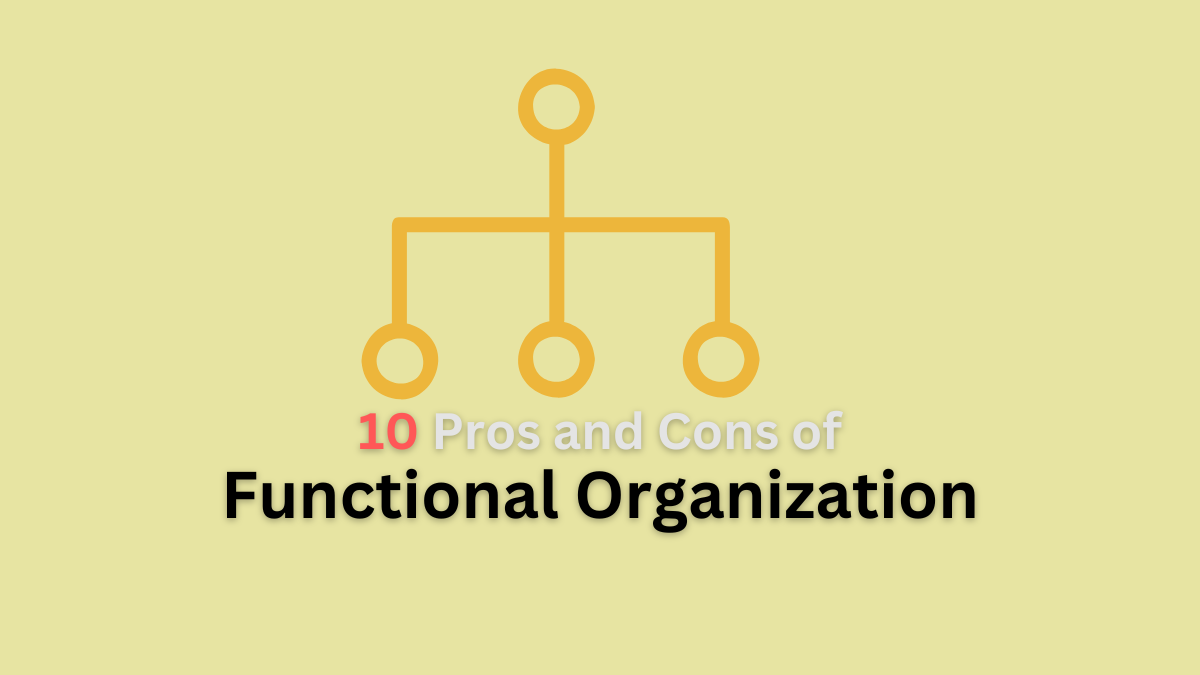Pros and Cons of Functional Organization
A functional organizational structure groups employees into departments based on their specialized skills or functions, such as sales, marketing, or finance. Each department operates independently within its domain, fostering efficiency but potentially limiting cross-functional collaboration and innovation.
Here we will delve into 10 main pros and cons of functional organization in business, so let’s get started:
Pros of Functional Organization
Functional organizational structure brings numerous benefits to business. Below are five to mention:
Specialization and Expertise
Functional structures allow employees to focus deeply on their specific areas of expertise, such as marketing, finance, or operations.
This specialization can lead to higher efficiency and quality of work within each department. Employees can develop deep knowledge and skills relevant to their functions, which enhances their ability to contribute effectively to organizational goals.
Clear Hierarchy and Accountability
The hierarchical nature of functional organizations provides a clear chain of command. Each department has its head responsible for overseeing operations and ensuring that goals are met within their domain.
This clarity helps in decision-making processes, as responsibilities and reporting lines are well-defined. Employees know whom to report to and understand their roles within the larger organizational structure.
Enhanced Coordination within Functions
Since employees within a department share similar skills and objectives, coordination and communication within the department can be streamlined.
This can lead to smoother workflows, fewer misunderstandings, and quicker resolution of issues related to specific functions. Managers within each department can focus on optimizing processes and improving efficiency without needing to oversee vastly different tasks.
Efficient Resource Allocation
By grouping employees based on their expertise, functional structures enable efficient allocation of resources.
For example, budgeting and resource allocation can be tailored to the specific needs and priorities of each department. This targeted approach helps in optimizing costs and ensuring that resources are used effectively to achieve departmental objectives.
Read More: The 10 Major Pros and Cons of Job Design
Clear Career Paths and Development
Functional structures often provide clear career paths within each department. Employees can see a progression from entry-level roles to senior positions within their specialized fields.
This clarity can enhance employee motivation and satisfaction, as they understand the opportunities available for growth and development within their chosen area of expertise.
Cons of Functional Organization
Functional organizational structure also has drawbacks, below are five to mention:
Limited Cross-Functional Collaboration
One of the primary drawbacks of functional structures is the limited interaction and collaboration between departments. Since employees primarily interact within their departments, there can be barriers to sharing information, ideas, and resources across functions.
This can hinder innovation and the ability to adapt quickly to changing market conditions or customer needs that require interdisciplinary solutions.
Read More: 10 Major Pros and Cons of Line Organization
Departmental Silos and Rivalries
Functional structures can create silos where departments become inward-focused and protective of their interests. This can lead to rivalries between departments competing for resources or recognition within the organization.
Such silos may also result in a lack of alignment with the overall organizational goals, as departments prioritize their objectives over the collective success of the company.
Slow Decision-making Process
While functional structures provide a clear hierarchy, decision-making processes can be slower compared to more flexible organizational structures.
Decisions often need to pass through multiple levels of management within each department before reaching a final resolution. This bureaucratic approach can delay responsiveness to market changes or customer demands, impacting the organization’s agility and competitive edge.
Read More: 10 Major Pros and Cons of Job Enrichment
Difficulty in Managing Interdisciplinary Projects
Projects that require input and collaboration from multiple functions can be challenging to manage within a functional structure.
Without a mechanism for seamless cross-functional teamwork, coordinating efforts across departments can lead to inefficiencies, misunderstandings, and delays. This can hinder innovation and the ability to leverage diverse perspectives and skills to solve complex problems.
Risk of Inflexibility and Resistance to Change
Functional structures can become rigid over time, making it difficult to adapt to external changes or internal initiatives that require organizational flexibility. Employees and managers may resist changes that disrupt established workflows or challenge departmental autonomy.
This resistance can stifle innovation and hinder the organization’s ability to evolve in response to new opportunities or competitive threats.
In conclusion, while a functional organizational structure offers distinct advantages such as specialization, clear accountability, and efficient resource allocation, it also presents significant challenges such as limited collaboration, slow decision-making, and departmental silos. Hence, these represent 10 main pros and cons of functional organization in the workplace.
